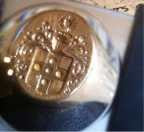Ecological Intelligence
 This is the mainstreaming of concepts such as 'Externalized Costs' that appear in 'The Story of Stuff' on youTube, this blog and other places as well. It is a call to mindfulness and well worth studying and considering.
This is the mainstreaming of concepts such as 'Externalized Costs' that appear in 'The Story of Stuff' on youTube, this blog and other places as well. It is a call to mindfulness and well worth studying and considering.Ecological Intelligence Written on May 2, 2009 – 9:50 am by Daniel Goleman
Originally published at Huffingtonpost.com
Originally published at Huffingtonpost.com
There’s a new kind of math for the environmentally concerned, one that answers those everyday eco-conundrums like, Which is better: a reusable stainless steel water bottle, or those throwaway plastic ones?
The answers come from life cycle assessment (or LCA), the method used by industrial ecologists — a discipline that blends industrial engineering and chemistry with environmental science and biology — to assess how man-made systems impact natural ones. LCAs tells us that buying food in one store that’s been shipped in bulk leaves a smaller carbon footprint than driving around town to the local bakery, farmer’s market, and dairy. Or that the better wine choice for those living east of Columbus, Ohio, is a French Bordeaux, and for those to the west it’s the Napa Valley.
Those are simple problems in ecological accounting, which is designed to evaluate any manufactured thing — your iPhone, Cheerios, lip gloss — on its entire range of impacts on the environment, human health, and the people who labored to make it. An LCA lays bare the hidden impacts of our stuff from the moment its ingredients are extracted or concocted, through manufacture, transportation, retail, use and disposal. A simple glass bottle requires 1,959 discrete steps from birth to disposal, each of which can be analyzed for dozens of impacts, from particles emitted to air, water and soil, to energy footprint or impact on the incidence of cancer.
Gregory Norris, the industrial ecologist who walked me through these ecological calculations, is putting LCAs to good use in Earthster, an open source website designed to help the folks who manage supply chains identify the impacts of their products and find less harmful upgrades.
And the more we all apply this new math, the greater our collective ecological intelligence. So here’s the lowdown on a very practical question: is it more ecologically correct to tote a stainless steel bottle you refill with water, or to use water in throwaway plastic bottles? As it turns out, it all depends.
Off the bat, making stainless steel has a worse impact profile than knocking out plastic bottles. Food-grade stainless is an alloy of chromium, nickel, and pig iron. The chromium comes from minds in places like Kazakstan and India, where workers have a heightened risk of cancer from exposure to the raw ore. Melting the metals requires heating them to thousands of degrees. All these processes release hundreds of pollutants into air, water and soil — including green house gases like methane and lung-clogging particulates. Then once you have your steel bottle, if you wash it in a dishwasher that uses a half-liter of electrically heated water, somewhere between 50 and a hundred washes result in the same amount of pollution caused by making the bottle in the first place.
Putting aside the question of plastics ridden with BPA, the chemical suspected of being a carcinogen and endocrine disrupter, the overall ecological impacts of a stainless bottle, compared to plastic, are more worrisome pretty much across the board.
So does it pay to use plastic bottles rather than stainless? Yes — but.
You’ve got to use the stainless bottle enough times to offset a great number of the plastic ones. At just five plastic bottles replaced by the stainless, the math starts to tip toward stainless; 25 uses brings you to the tipping point where most of the ecological negatives of the plastic bottles are outweighed by your using stainless steel. And at 500 replaced plastic bottles you pass the last marker — freshwater eco-toxicity — so you’re benefiting the planet every time you sip from your stainless.


<< Home